8 things we learned at GDC 2018
Blockchain, Battle Royale and VR's new wave – here's what the world's biggest developers' conference told us about the future of video games
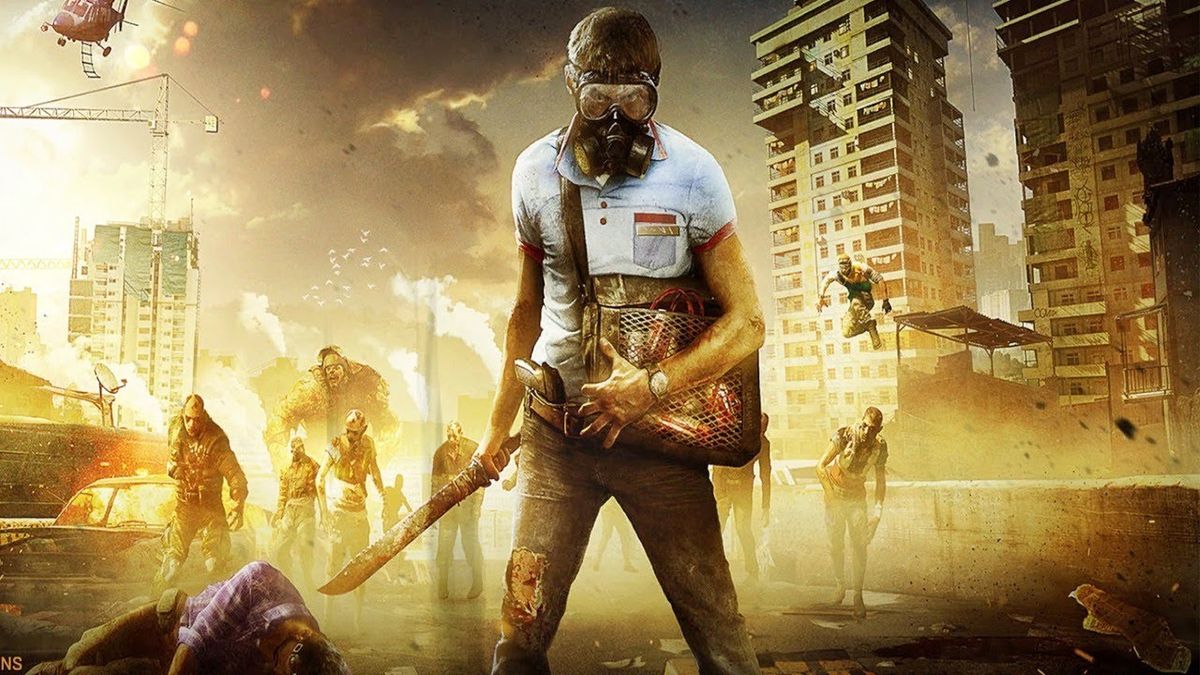
It doesn't have the big-stage theatricality of E3 or the public-facing accessibility of PAX, but the Game Developers Conference (GDC) always offers a fascinating look into how games from the past, present, and future are actually made. From a show floor full of incredibly varied indie titles, to hours upon hours of enlightening panels and presentations hosted by developers, GDC 2018 was a chance to look behind the curtain and take stock of how the industry is doing as a whole. For instance, the clamor of 2016's VR gold rush now feels like a low rumbling in the background, and Battle Royale games have become the new titan genre - move over, MOBAs - that puts dollar signs in the eyes of developers and investors alike. Here are some key insights into how games are doing in general, and what makes them tick, from our panel of GDC 2018 attendees: Dan Dawkins, Rachel Weber, and Lucas Sullivan. Whether you make games or just play them (like us), think of these observations as a snapshot of the games industry at large, both where we're at and where we're going.
1) Blockchain is gaming's Next Big Thing (but no one is sure how it will work)

This year's schedule featured a whopping six talks heralding Blockchain’s potential to transform gaming, from ‘Blockchain will change virtual game items forever’ to ‘The easy on-ramp for monetizing games with Blockchain’. You first question, of course, might be: what is Blockchain? There’s all manner of plain English Blockchain explanations like this from Lifehacker, that likens it to Google Documents - with a nice analogy about multiple people working on a word document at once - but for banking or virtual transactions. Long story short, there’s excitement about how Blockchain / cryptocurrency (like Bitcoin) can be used to create new ways to fund games, and to allow users to truly own virtual assets, rather than the value only existing on a company’s server or virtual economy.
Still confused? Imagine if in-game assets (that you designed or earned; be they weapons, buildings, or outfits) could be seamlessly traded for ‘real’ items like games on Steam or the PS Store. Look, no one said this was straightforward, but whether you ever hear the word Blockchain again or not - and you will - the technology might be working in the background to make your virtual transactions far more seamless, avoiding the need to navigate multiple systems and logins. Don’t take our word for it - here’s a handy primer to Blockchain’s potentially revolutionary impact from Venturebeat. Daniel Dawkins
2) Red Dead Redemption startled the horses… and spring's absence of AAA releases made for a low-key GDC 2018
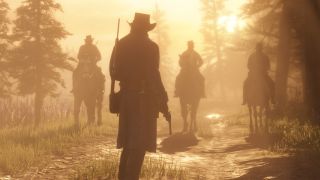
GDC definitely - and deliberately - isn’t E3 in terms of pizzaz or AAA game announcements, but previous years have seen a big PlayStation VR unveiling, and Hideo Kojima presenting new details from Metal Gear Solid V while masquerading as Joakim Mogren. GDC 2018 was short of headline acts, with the soft white spotlight belonging to new indie games like Minit, What the Golf, Untitled Goose Game, and Vacation Simulator. In a broader sense, it’s been a slow year for big game releases. Capcom’s excellent Monster Hunter World, released on Jan 26, is the firm’s biggest selling game of all time - but it’s hard not to draw a line between its popularity and the absence of major AAA competitors in the first few months of 2018.
What happened to all the big games? Red Dead Redemption 2. Or rather, the lack of it, after Rockstar’s game was delayed until October 26, 2018 after being originally pegged as a Q1/Q2 release. It’s tempting to conclude that rival publishers were keen to avoid releasing their games in Spring 2018 so as not to clash with Rockstar's giant sequel, but when Red Dead’s delay was announced, it was too late to reschedule. With no major announcements or new releases to promote, GDC 2018 might have passed you by unnoticed, begging the question... Dan Dawkins
3) Who is GDC for? Is it a developer, business, or press event - or a hybrid that fails to serve anyone?
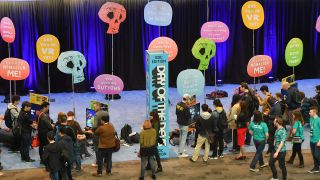
As a journalist, it’s a curious event, where you attempt to cherry pick the best developer talks (with up to six interesting discussions stacked at the same time); while guessing which feels most newsworthy from the strength of the session’s headline. Talks which sound interesting can often be surprisingly technical, with limited interest to most games players - like a session we attended on how Epic optimised Fortnite to run at 60fps on multiple platforms. On the other hand, a few developers and industry figures we spoke to felt that GDC wasn’t as collaborative as it used to be. The event’s primary focus used to be for developers to meet and share vital tips, advice and concerns in a ‘neutral zone’ free of publisher interference or promotion schedules, but now the intertwining of commerce and art, plus the huge stakes at play, mean too many talks play it safe in terms of giving up development secrets and inside knowledge. This is, of course, a broad observation, with GDC still hosting well over 600 talks on topics as diverse as developer tools, marketing, funding, advocacy, rendering, art and more - but as technology and culture magazine Wired asks, who is this show even for?
Maybe it’s the wrong question. In a world of spreadsheets, optimization, and image control, where every input needs a definable outcome, surely there’s something to be said for just… hanging out? GDC 2018 remains the best place to meet people from all walks of the games industry, from CEOs, to influencers, to eSports players, to student developers, all figuring out where they’re supposed to be, sharing conversations, and making connections that might prove invaluable days or years down the line. As journalist Matt Lees noted in his GDC 2015 Vice article, there’s a lot to be said for an event where everyone gets to figure out their role in the wider games industry - and by meeting others who feel the same, finding hope for how we can move forward. That, and getting drunk. Of course. Daniel Dawkins
4) Battle Royale is the new Doom / GTA / Call of Duty, and the only way to stand out is to do things differently
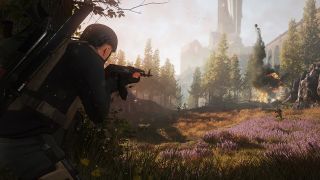
The most technically ambitious of the new Battle Royale baby boomers looked to be Mavericks: Proving Grounds, built by a bunch of smart engineers with Improbable’s SpatialOS tech as its foundation. In case you don’t spend your nights researching various game developer tools, it’s a technology that allows for game worlds full of real physics, superior AI, and an environment where your actions leave a mark on the landscape. It’s also super efficient, stitching together the behinds-the-scenes bits of engines and servers so games can run smoother and look prettier.
Sign up to the 12DOVE Newsletter
Weekly digests, tales from the communities you love, and more
As I was being relentlessly murdered on the show floor in a quick demo, I couldn’t help but notice that - at least in these very controlled preview situations - the world was the best looking in a battle royale game I’ve seen. That’s partly thanks to SpatialOS and its electrical witchcraft.
Elsewhere, Dying Light: Bad Blood sees a mere four human players fight multiple zombies (and each other) across a level, collecting weapons as they go, with the twist being that only one can board the escape helicopter at the end. Battle Royale has assuredly replaced the multiplayer shooter as the hot new thing, and while that'll be tough on developers looking to break in, it means lots of exciting new ways to get your Hunger Games-style kicks over the next 12 months. Rachel Weber
5) Nindies squared up against ID@Xbox - who's got the best line up?
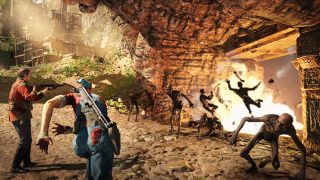
Microsoft likes to show its commitment to indies at GDC every year with an ID@Xbox event, where you can find anything from high-profile titles like Rebellion’s Strange Brigade, to more under-the-radar treasures like Flipping Death. Like PlayStation, it's turned to indies in recent years to help build out a portfolio that goes beyond the annual AAA releases, but now they have competition. With the Switch, Nintendo has made it easier than ever for developers to get their game out to the the Nintendo loyalists. The good news for gamers is that exclusives are pretty much a thing of the past when it comes to indies, so you can play how you want, on the device you want, and the developers can benefit from all that money from a wider audience to make even more games. Rachel Weber
In years past, the PS4 seemed like the de facto destination in the console space for all things indie, with a huge push to promote smaller titles to the mainstream. But with the Switch, I think Nintendo has usurped the indie throne from PlayStation, while ID@Xbox still needs to prove itself with games that didn't already make their name on PC. Everybody I know goes gaga for the portability and handheld, Game Boy-esque nature of playing indies on their Switch, and the smaller screen can often make simplistic graphics look better than they might on a monitor or TV. The Nindies lineup at GDC was among the best I've seen yet, with standouts including The Messenger (a Ninja Gaiden homage that has you swapping between 8- and 16-bit levels), Pool Panic (a lovably bizarre cartoon take on billiards), and Lumines Remastered (complete with Joy-Con vibrations in time to the music). I'm also very curious to see more of Travis Strikes Again: No More Heroes after chatting with Suda51 and getting some brief hands-on with the top-down brawler. There will always be power shifts between the big consoles every few years - and right now, I reckon that Nintendo is on top of the indie heap (besides, y'know, the endless font of indie content on PC). Lucas Sullivan
6) Virtual Reality isn't actually mainstream, but the tech is maturing
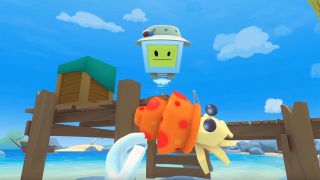
Virtual reality, mixed reality, augmented reality - basically all the realities - had a much smaller showing than they did at the last couple of GDCs. What was noticeable was the quality of what was on offer, as game makers and tech builders find their feet and share technology. Everything I tried was technically impressive and I didn’t hear a single person regaling the corner of a party with stories of throwing up in a trash can after a demo.
Fans of headsets and magic glasses shouldn’t get nervous, a slowdown of the hype train was inevitable (and expected) by everyone in the space. It will be a while before the technology goes mainstream, but in that quiet time everyone is still hard at work on it.
What's exciting is to see the technology grow; the new, wireless Oculus Go is a much more accessible (and less intimidating) way to enter the space. And seeing the evolution from the quintessential Job Simulator to the new Vacation Simulator is genuinely exciting. We’re still a little way from a VR headset sitting on every desk next to the Switch and the iPhone, but we’re one step closer. Rachel Weber
7) Constant prototyping is the key to developing a great game

When it comes to game design, prototyping is apparently king. Every postmortem talk I went to heaped praise upon the practice of constant prototyping in the early stages, building simple versions of the mechanics you want to eventually implement and making sure they're actually fun before you work any further. It's a process that does wonders for games big and small, whether it's a big-budget title like Splatoon, Monster Hunter World, or Horizon Zero Dawn, or an indie darling like Heat Signature or What Remains of Edith Finch.
It also makes for some of the most fascinating and entertaining behind-the-scenes insights: a glimpse at what the highly polished games we know and love looked like in their earliest stages, often to hilarious effect when you consider just how far they've come. If you aspire to make games yourself, remember to actually test the ideas you think will be fun and interesting, rather than pouring work into them on blind faith, only to find that they don't really serve the game and its core purpose. Lucas Sullivan
8) Third-party amiibos are only possible if indie studios front the costs
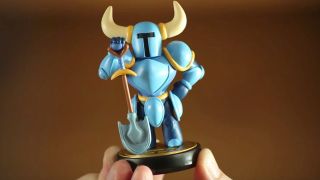
This isn't news per se, but I simply wasn't aware of this fact: getting amiibo figures made for a beloved third-party indie game (like Shovel Knight) rests solely on the small studios themselves. In his talk about the making of SteamWorld Dig 2, Image & Form's Brjann Sigurgeirsson fielded a question about the possibility of amiibo being produced for such a cult favorite series. While Sigurgeirsson sounded open to the idea, he made sure to mention that all the financial risk lies with his company, not Nintendo; Nintendo merely licenses out the amiibo technology to interested parties, and the indie studios have to handle every aspect of design and production themselves.
You can watch Sigurgeirsson discuss it further in this video, but it's sobering to know that Nintendo has no vested interest in getting amiibos made for any game beyond its first-party lineup. At least things are slightly easier nowadays: Sigurgeirsson noted that the quantity for the initial production run would be much lower compared to the amiibo's early days, so it'd be less of an all-or-nothing play for ambitious indie studios willing to take on - and fund - that kind of project. Lucas Sullivan
The best of what we saw at GDC 2018
- 12 things we learned about Fortnite at GDC 2018
- “I'm really looking forward to Red Dead Redemption 2” and at least three other things you weren’t expecting Killer7 creator Suda51 to say
- Splatoon’s paint-swimming Inklings started life as burrowing rabbits
- Flipping Death is a new game written by Unbeatable Squirrel Girl, Adventure Time and Dinosaur Comics author Ryan North
- “We made a four-page manual on crate stacking”: Ratchet and Clank’s creators on the lessons of their 15-year success story
Wondering what you should be watching out for over the coming months? Be sure to check out our list of our most anticipated new games of 2018.
12DOVE was first founded in 1999, and since then has been dedicated to delivering video game-related news, reviews, previews, features, and more. Since late 2014, the website has been the online home of Total Film, SFX, Edge, and PLAY magazines, with comics site Newsarama joining the fold in 2020. Our aim as the global GamesRadar Staff team is to take you closer to the games, movies, TV shows, and comics that you love. We want to upgrade your downtime, and help you make the most of your time, money, and skills. We always aim to entertain, inform, and inspire through our mix of content - which includes news, reviews, features, tips, buying guides, and videos.

Assassin's Creed Shadows was originally envisioned without Yasuke, but Ubisoft wanted the full feudal fantasy: "We were sort of making a stealth tank, and it didn't quite work"
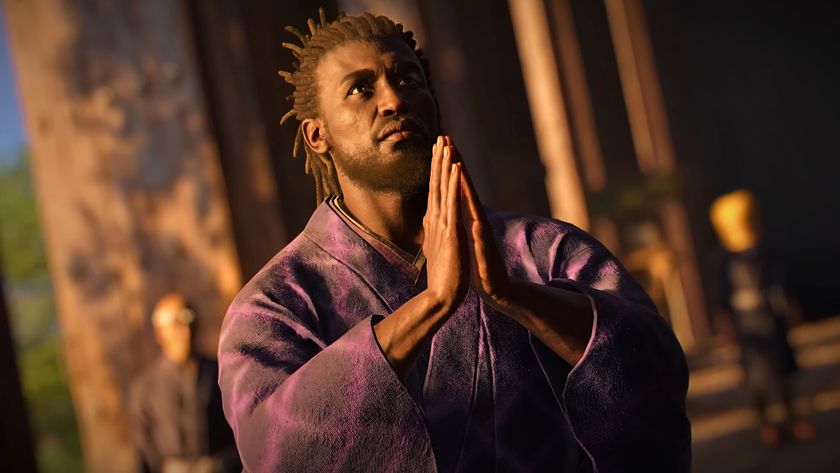
Assassin's Creed Shadows lead says dual protagonists are "a cool thing" the new action RPG "does better than what we've done in the past"










